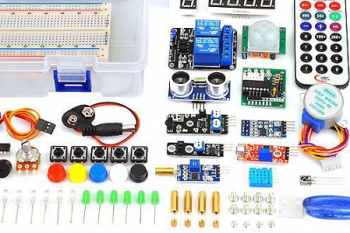Product news
Exact for Manufacturing Innovation: Introducing order lead time

On the quotation screen and in the bill of material version in Exact for Manufacturing we mention the ‘lead time’. We have created this quantity to express how long it takes to manufacture a part or a batch of parts. Now we start working to develop a Premium edition, we will have to become more precise in our definitions of lead time. We will rename our current lead time into ‘production lead time’, create a new quantity called ‘order lead time’, and introduce these in all editions of Exact for Manufacturing.
Purchase lead time An existing quantity that will remain unchanged is the ‘purchase lead time’. The purchase lead time can be defined in Maintenance | Supplier/Item and expresses the (minimum) time it takes from releasing a purchase order to the goods receipt. The unit for the purchase lead time is day since purchase orders mention a requested date (and rarely a requested time). This quantity is already used in the MRP calculation of Exact for Wholesale Distribution Premium and Exact for Manufacturing Premium: the difference between planned available (date) and to purchase (date). Production lead time The production lead time is the time required from releasing a shop order to receiving the part. As with the purchase lead time, the unit is day. A question frequently asked is whether (or not) the production lead time can be derived from the setup time(s) and run time(s) of the routing. The answer is that that is hard to impossible. Firstly, operations in the routing may be sequential (operation 1 should be finished before operation 2 commences), but they may as well have more complicated dependencies (run parallel for example). Secondly, and more important, the production lead time should also cater for preparation (picking materials), delays in front of the machine (queue), waiting for transport to the next machine or a warehouse (wait), and the time for internal transport (move). Usually, queue, wait and move take more time than the actual execution time (setup and run). If we have to manufacture subassemblies, the total production lead time will be longer than just the lead time of the end product. What we have termed lead time until now, we are re-terming into production lead time. The production lead time is to play are role similar to the purchase lead time in MRP: the difference between planned available (date) and to manufacture (date). The production lead time can be maintained on the bill of material version, and on the shop order card.

Order lead time The order lead time is the time required from creating a sales order to delivering the part. Also here, the unit is day. The objective of the order lead time is to suggest the (earliest) delivery date: the delivery date is derived from the creation date (‘today’) plus the order lead time. For parts that are make-to-order this could mean that we have to manufacture sub-assemblies and have to purchase components (and therefore the order lead time is much longer than the production lead time of the end product), but for parts that are make-to-stock we assume that we have inventory and we just need some time to process the order. In that case the order lead time is of course much shorter than the production lead time. The order lead time can be maintained on the bill of material version and on the quotation screen. (Click to enlarge) These improvements will be available as of now for all versions of Exact for Manufacturing.
(Click to enlarge) These improvements will be available as of now for all versions of Exact for Manufacturing.


